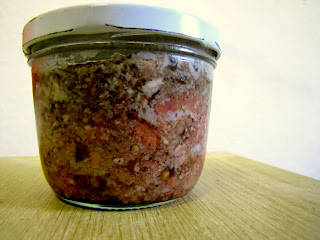The simple gist of the story is that these hallucinogenic mushrooms are commonly consumed by the native reindeer of Siberia, as well as those men who herd them around as draught animals. The implications being that the magical Christmas Eve flights taken by Santa and his team of ruminants, are in fact fueled by this primitive psychedelic drug coursing through the veins of both man and animal. (the video at the bottom provides a visually stunning continuation of these details)
As a student of both livestock and fungi, I have been familiar with this story for years....but this season something seems to be different. What once was merely fodder for goofy late-night party chatter, has entered a realm of public discussion that even I would not have anticipated. On NPR's Facebook page alone, this story received just shy of 3,000 "likes" and over 300 "comments" - by far surpassing the interest level of most all other stories on the docket , and slightly trailing only one compelling piece about Jon Stewart assisting 9/11 Heroes.
So why the emergent interest? Certainly it's a humorous idea to think that our beloved jolly gift giver is actually jacked up on some kind of crazy drug......and for many, that may have been the underlying cause of interest. But I think this story goes much deeper than humor or drug-lust, and I think it's growing acceptance is due to far more complex cultural causes.
At it's heart, this story reminds us that much of religion and cultural mythology is built upon evolutionary principles originating from ancient cultures and mentalities that few of us can scarcely imagine. There are relatively few people left on this earth that did not grow up with the co-opted Coca-Cola version of Santa Claus imagery. To transcend this commercialized icon, and instead connect with the authentic, dynamic transitions of meaning inherent in any cultural myth is a powerful experience.
And yet there is even more meat to this story than just 'authentic connection'. While the catchy part of the shroomed-up Santa myth is clearly the hallucinogenic component, there is a still more powerful subtext about the relationship of man and beast.
Whether or not you ever 'really' believed in Santa, as adults we all now accept it as myth, however valuable or commercial we may view it to be. The story of Santa's Fly Agaric mushroom obsession, with all it historical verifiability, is the first time we are being told that HE really did exist - with all the magic and wonder we were promised as kids. What's more, the story outlines incredible geographic specificity. No, it's not the North Pole, but the similarly arctic regions housing the Lapps of modern Finland, and the Koyak tribes of central Russia. These details transform Mr. and Mrs. Claus into semi-nomadic farmers - of whom we can know quite a bit - specifically regarding their relationship with their cows.....errr....reindeer.
To think that Rudolph, Donner, and Blitzen have long since been ground up and turned into hamburgers may be unsettling to some.....but for both the original and modern-day "Claus Family" - the meat and milk provided from their reindeer herds were likely a major, if not the major, reason that these beasts are the ones "delivering" gifts to the community. Grass and fungi-eating ruminants (cows, goats, sheep...and reindeer) have long been symbols of the fecundity of the earth, and the recipients of eternal human thanks. Assuming that the genetic defects producing Rudolph's red nose didn't also render him sterile, his great descendants are undoubtedly still roaming the steppes of north central Eurasia. It is the immense respect for these animals, combined with sustainable patterns of consumption and work from the very real and yet still mythical "Claus Family" that we have to thank for this.
As you enjoy your holiday meats this season, take time to give thanks to the many incredible creatures and genomes we work with to keep this food on the table.










